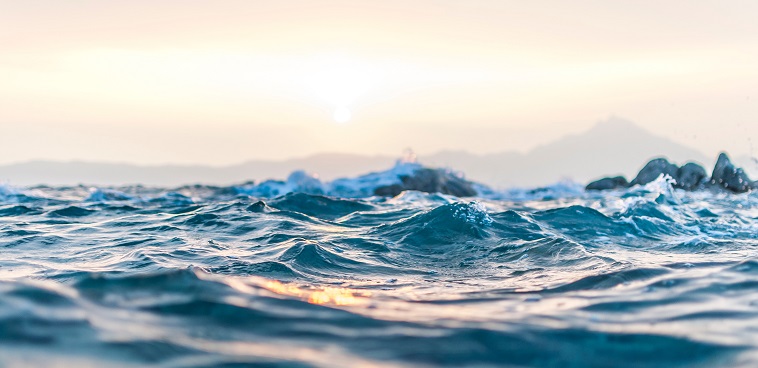Plastics offer a lot of benefits in daily life, but they also enter our oceans in large quantities. What can be done about that problem — not just in preventing waste but in capitalizing on it?
Presenters at last week’s GlobalChem conference organized by the American Chemistry Council provided a path forward that relies on quick, effective funding, testing and scaling of infrastructure projects through a variety of partners, including government, environmental groups, corporations and industry groups such as ACC.
These groups have ambitious targets in mind. One such goal, noted by Ocean Conservancy’s Emily Woglom, is to sustainably reduce plastic waste entering oceans by 60% by 2025.
The questions presenters looked to answer last week was, “What are we up against? How do we fix it?”
In his opening remarks, Steve Russell, vice president of ACC’s Plastics Division, noted that ACC and its member companies have worked for many years to combat this problem, first with recycling and anti-litter campaigns. But there was a clear need to do more. Eventually, ACC became aware of Ocean Conservancy’s efforts, which had started with beach cleanups but also saw that alone would be insufficient.
Ocean Conservancy has been working on such cleanup efforts for 30 years, collecting data all along the way. But in the past 10 years has emerged a wealth of knowledge on the situation of plastics waste in oceans, including how much plastic is entering waters, what species are being affected, and an examination of a vast variety of interventions and waste solutions, Woglom said.
Today, most used plastic entering oceans is not in wealthy countries, but in developing economies, especially these five: China, Indonesia, the Philippines, Vietnam and Thailand. In these countries, economic growth is creating increased consumer buying power. However, that means new products are being used and disposed of without the infrastructure for handling, disposing of or recycling waste.
Ocean Conservancy found that, in these areas, some waste was leaching out of landfills or being dumped instead of delivered, Woglom said, but 75% of plastic marine litter was never collected, much less handled.
The other key driver of marine litter that Ocean Conservancy found was that certain types of plastics waste was being recovered — mainly, plastic that had a higher economic value for recovery. Without that financial incentive, other types of plastics were less likely to be collected.
Collection is not the only considered, as Closed Loop Fund‘s Robert Kaplan noted. Waste and recycling infrastructure also includes “sorting, processing and end markets. You need entire, essentially, supply chains within a singular wasteshed to function and exist. We believe that the economics can work in those cases when you have infrastructure up-front covered,” he said.
How does infrastructure get built — and quickly?
Woglom said that a goal like cutting plastic waste entering oceans by 60% can’t be done with pilot projects or at the local level. These projects, to scale successfully, need to hit wide geographies, they need to include government, and they need to find ways to bring in industry partners, such as ACC and its members.
So, how does infrastructure get scaled up quickly in countries that don’t have a history of prioritizing waste infrastructure and have the most uncollected waste entering waterways?
It’s not about reinventing the wheel, as Woglom said. “We know how to do waste management.”
Closed Loop Fund is an organization working on this problem through three main units — one for financing projects related to recycling infrastructure and circular economies, one for venture funding of potentially innovative/disruptive business models and technology, and one for R&D efforts aimed at finding new investment areas.
In Asia, a key area for stemming plastic marine litter, there will be $25 trillion in infrastructure investment needed through 2030, according to Kaplan’s presentation. Various forms of corporate and foundation funding, and new ways of structuring funding, will be critical to meeting this need, Kaplan argued, particularly in recycling and waste infrastructure. Also needed, he said in echoing Woglom’s comments, is a political and societal understanding in these countries of the importance of recycling infrastructure.
Closed Loop Fund looks to spur “catalytic funding” — what his slides called “small, finite amount of risk-tolerant, concessionary financing” that can leverage and attract corporate and institutional funding.
Another key point, Kaplan said, is that such funding should be “boring” — as uncontroversial to fund as something like building roads.
To that end, Ocean Conservancy, Closed Loop Food, ACC and other partners in late 2017 agreed to raise $150 million for innovative recycling-infrastructure funding efforts in Southeast Asia.
What else is industry doing?
Keith Christman of ACC emphasized that plastics, on their own, are beneficial in a number of ways, whether in energy and emissions savings, innovations that improve quality of life, and more. But plastics litter harms the environment and those benefits.
Christman also noted that efforts to find solutions to plastic wastes are key, rather than bans of types of plastics. Plastics have environmental benefits both in terms of what they do (citing food packaging for its ability to reduce food waste) and for, as a Trucost report detailed in 2016, being environmentally superior compared with alternatives.
He also discussed further ACC’s work with Ocean Conservancy and other groups, as well as various legislative, communication and education campaigns ACC’s been involved with. These include supporting a phaseout of microbeads and a United Nations declaration, running advertising and educational campaigns. ACC, its Plastics Division and some member companies belong to such groups as the Trash Free Seas Alliance, the Association of Plastics Recyclers and the Closed Loop Ocean program.
ACC is also encouraging and supporting infrastructure projects to handle additional forms of recycling such as plastic film, non-bottle rigid recycling. Another form of this is chemical recycling, which is less far along but was cited by speakers for its potential.
SmartBrief and ACC publish a daily newsletter on the chemical industry. View the latest issue and sign up for free.
